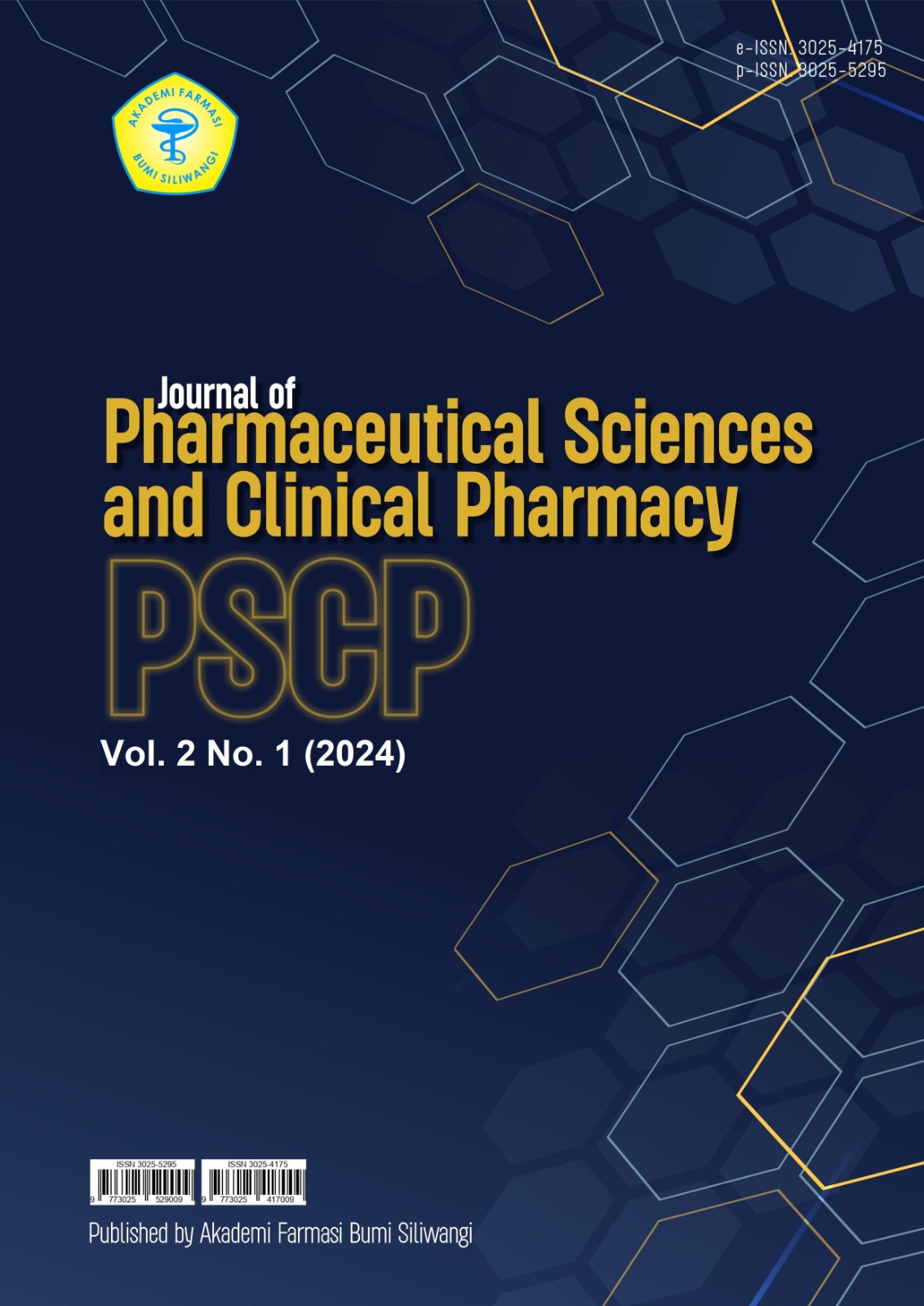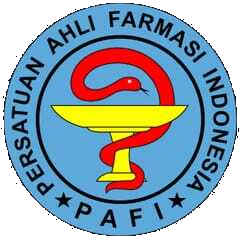PENAMBATAN MOLEKUL SENYAWA AKTIF SIRIH (Piper betle L) TERHADAP RESEPTOR HSV-1 SEBAGAI KANDIDAT ANTI HERPES
DOI:
https://doi.org/10.61329/pscp.v2i1.22Keywords:
Penambatan Molekul, Sirih, HSV-1, Herpes, AutodockToolsAbstract
Tanaman sirih secara tradisional telah digunakan untuk pengobatan beberapa penyakit seperti bau mulut, penyembuhan luka, anti radang, batuk pilek, gangguan pencernaan. Sebagian besar manfaat sirih untuk kesehatan berasal dari senyawa bioaktif fenolik yang terdapat pada tanaman sirih, senyawa polifenol juga diketahui memiliki berpotensi sebagai antivirus. Herpes Simplex Virus (HSV) adalah patogen yang sangat menular yang menyebabkan infeksi berulang. Infeksi herpes disebabkan oleh masuknya virus ke dalam sel hingga mencapai lapisan membran atau gabungan sel. Penelitian ini bertujuan untuk mengetahui sifat ADMET dan memprediksi ikatan senyawa bioaktif yang terkandung dalam sirih terhadap reseptor HSV-1 dengan kode protein 2KI5 sebagai kandidat obat antiherpes. Metode yang digunakan pada penelitian ini secara in silico yaitu penambatan molekul menggunakan aplikasi AutodockTools dengan visualiasi menggunakan aplikasi Discovery Studio. Dari hasil penelitian ini diketahui bahwa senyawa bioaktif dari tanaman sirih mempunyai aktivitas pengikatan terhadap reseptor HSV-1, senyawa 4-Allylphenol dengan nilai ΔG -7.79 Kkal/Mol dan Ki 1.96 µM dan 4 kemiripan asam amino dengan senyawa pembanding diprediksi dapat dijadikan sebagai kandidat obat antiherpes karena memiliki sifat absorbsi, distribusi, metabolisme, eksresi dan toksisitas yang baik.
Downloads
References
Madhumita M, Guha P, Nag A. Bio-actives of betel leaf (Piper betle L.): A comprehensive review on extraction, isolation, characterization, and biological activity. Phyther Res. 2020;34(10):2609–27.
Mani P, Menakha M, Al-Aboody MS, Alturaiki W, Vijaya Kumar R. Molecular docking of bioactive compounds from Piper plants against secreted aspartyl proteinase of Candida albicans causing oral candidiasis. Int J Pharm Clin Res. 2016;8(10):1380–9.
Saran N. Molecular docking analysis of a secondary metabolite with the glycoprotein receptors of HSV 1 and HSV 2. Bioinformation. 2019;15(12):887–93.
WHO. Virus herpes simpleks. 2023; Available from: https://www.who.int/news-room/factsheets/detail/herpes simplex-virus
Jensen F. Introduction of Computational Chemistry, 2nd edition. Denmark: John Wiley and Sons; 2007.
Castro-Alvarez A, Costa AM VJ. The Performance of Several Docking Programs at Reproducing Protein-Macrolide-Like Crystal Structures. Molecules. 2017;(1):136.
Lu G, Zhang N, Qi J, Li Y, Chen Z, Zheng C, et al. Crystal Structure of Herpes Simplex Virus 2 gD Bound to Nectin-1 Reveals a Conserved Mode of Receptor Recognition. J Virol. 2014;88(23):13678–88.
Pires DEV, Blundell TL, Ascher DB. pkCSM: Predicting small-molecule pharmacokinetic and toxicity properties using graph-based signatures. J Med Chem. 2015;58(9):4066–72.
Hartanti IR, Putri AA, Auliya AS NN, Triadenda AL, Laelasari E, Suhandi C, et al. Molecular Docking Senyawa Xanton, Benzofenon, Dan Triterpenoid Sebagai Antidiabetes Dari Ekstrak Tumbuhan Garcinia Cowa. J Kim. 2022;16(1):72.
Rampogu S, Parameswaran S, Lemuel MR, Lee KW. Exploring the Therapeutic Ability of Fenugreek against Type 2 Diabetes and Breast Cancer Employing Molecular Docking and Molecular Dynamics Simulations. Evidence-based Complement Altern Med. 2018;2018.
Syahputra G, Ambarsari L, T S. Simulasi docking kurkumin enol, bisdemetoksikurkumin dan analognya sebagai inhibitor enzim12-lipoksigenase. Biofisika. 2014;10(1):55–67.

Downloads
Published
Issue
Section
License
Copyright (c) 2024 Yunita Al Azzahra, Taufik Septiyan Hidayat, Syumillah Saepudin

This work is licensed under a Creative Commons Attribution-ShareAlike 4.0 International License.






















